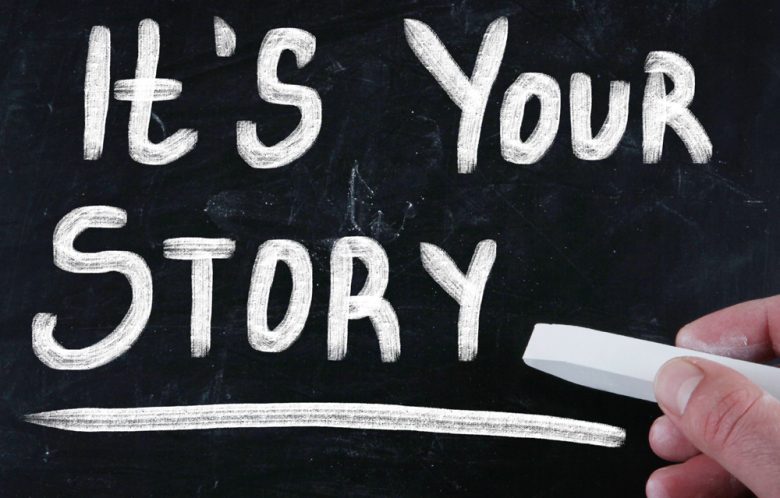When it comes to writing an autobiography for school, there are a few things you will want to keep in mind. First, think about the purpose of the autobiography. Typically, an autobiography is written to provide a snapshot of your life and to share your story with others. As such, it should be well-organized and include important details that will help readers understand your life.
Second, autobiography writing can be a challenging task. It can be difficult to know what details to include and what to leave out. When writing your autobiography, aim to be as concise and accurate as possible. Be sure to focus on the most important events and moments in your life, and don’t worry about including every little detail.
Finally, autobiography writing is a great opportunity to reflect on your life and to share your thoughts and memories with others. As you write, be sure to include your thoughts and feelings about the events in your life. This will help readers understand your story and your perspective on life.
When writing your autobiography, there are a few things to keep in mind. First, think about the purpose of the autobiography. Typically, an autobiography is written to provide a snapshot of your life and to share your story with others. As such, it should be well-organized and include important details that will help readers understand your life.
Second, autobiography writing can be a challenging task. It can be difficult to know what details to include and what to leave out. When writing your autobiography, aim to be as concise and accurate as possible. Be sure to focus on the most important events and moments in your life, and don’t worry about including every little detail.
Finally, autobiography writing is a great opportunity to reflect on your life and to share your thoughts and memories with others. As you write, be sure to include your thoughts and feelings about the events in your life. This will help readers understand your story and your perspective on life.
How do I write an autobiography for my school?
It can be tough to know where to start when writing an autobiography for school. But with a few simple tips, you can easily create a work that will both impress your teacher and provide a snapshot of your life so far.
The first step is to gather together all of the important information about your life. This includes your birthdate, birthplace, parents’ names, siblings’ names, and any other significant family information. You’ll also want to include your education history, from earliest memories of school to your current grade and institution.
Once you have all of your information gathered, it’s time to start writing. Begin by telling your story in brief, summarizing the most important points of your life. Then, go into more detail about each topic, elaborating on your experiences and what you learned from them.
Be sure to make your autobiography interesting to read. Use strong verbs and vivid adjectives, and let your personality shine through. If you can, try to find a unique angle or perspective to share about your life.
When you’re finished writing, be sure to proofread and edit your work. Make sure all of your information is correct, and fix any errors or typos. Then, have a friend or family member read your autobiography to give you feedback.
Creating an autobiography can be a challenging but rewarding experience. By taking your time and following these tips, you can create a work that will be both memorable and informative.
What are the 7 steps in writing autobiography?
There are seven basic steps in writing an autobiography:
1. Choose a focus or theme for your autobiography. This could be a particular time period in your life, a particular theme or topic, or a specific event that you want to write about.
2. Outline your autobiography. This will help you to organize your thoughts and ensure that your story flows smoothly from one event to the next.
3. Write your autobiography. This is the actual writing of the autobiography.
4. Edit and revise your autobiography. This is an important step, as it allows you to polish your writing and ensure that your story is told in the most effective way possible.
5. Publish your autobiography. This may involve finding a publisher or self-publishing.
6. Market your autobiography. This is the process of getting your autobiography in front of as many people as possible.
7. Promote your autobiography. This is the process of getting people to buy your autobiography.
How do I start off my autobiography?
There are a few different things you’ll want to consider when starting your autobiography. The first is deciding on your audience. Who do you want to read your story? Your friends? Your family? The general public? Once you know your target audience, you can start to think about what you want to share and how much detail you want to go into.
autobiography
The next step is to create an outline. This will help you to organize your thoughts and ensure that your story flows in a logical way. Your outline can be as simple or as detailed as you want it to be. Some people prefer to start with the earliest memories and work their way forward, while others prefer to start with a specific event and build the story around that.
autobiography
Once you have your outline, it’s time to start writing. Don’t worry if your first draft isn’t perfect. You can always go back and revise it later. As you write, be sure to capture your emotions and thoughts as you experienced them at the time. This will help your readers to feel like they are right there with you.
autobiography
When you’re finished writing, you’ll want to do a final revision to make sure that your story is polished and error-free. Once you’re satisfied, it’s time to publish your autobiography. You can either self-publish or look for a publisher.
Autobiography is simply defined as a book written by the person it is about. It tells the story of a person’s life, from birth to the present day.
Autobiographies can be incredibly interesting to read, as they offer a unique and personal perspective on life.
If you’re thinking about writing your own autobiography, there are a few things you’ll want to keep in mind. The first is your audience. Who do you want to read your story? Your friends? Your family? The general public? Once you know your target audience, you can start to think about what you want to share and how much detail you want to go into.
The next step is to create an outline. This will help you to organize your thoughts and ensure that your story flows in a logical way. Your outline can be as simple or as detailed as you want it to be. Some people prefer to start with the earliest memories and work their way forward, while others prefer to start with a specific event and build the story around that.
Once you have your outline, it’s time to start writing. Don’t worry if your first draft isn’t perfect. You can always go back and revise it later. As you write, be sure to capture your emotions and thoughts as you experienced them at the time. This will help your readers to feel like they are right there with you.
When you’re finished writing, you’ll want to do a final revision to make sure that your story is polished and error-free. Once you’re satisfied, it’s time to publish your autobiography. You can either self-publish or look for a publisher.
Autobiography can be a great way to share your story with the world and allow others to get to know you in a deeper way. If you’re thinking about writing your own autobiography, these tips should help you get started.
What is an example of an autobiography?
An autobiography is a self-written account of someone’s life. It can be a detailed account of someone’s entire life, or a specific time period or event in their life. Autobiographies are usually written in first person, and can be shared with others in the form of a book, article, or blog post.
How to write an autobiography example
How to Write an Autobiography
There is no one formula for writing an autobiography. However, there are a few things that all successful autobiographies have in common.
The most important thing to remember when writing your autobiography is to keep it interesting. Nobody wants to read a long, dry account of your life. Instead, focus on the interesting and unique moments that make up your life story.
Another key element of a successful autobiography is authenticity. Make sure that your story is told in your own voice, and that it is based on your own experiences.
Finally, be sure to keep your autobiography concise. Don’t try to include everything that has ever happened to you. Instead, focus on the key moments and experiences that have shaped your life.
If you’re not sure where to start, here are a few tips to help you get started:
1. Start by telling the story of your childhood.
2. Talk about the key moments and experiences that have shaped your life.
3. Write about your career, your family, and your hobbies.
4. Include a few personal thoughts and reflections on your life.
5. End your autobiography with a brief overview of your life today.



